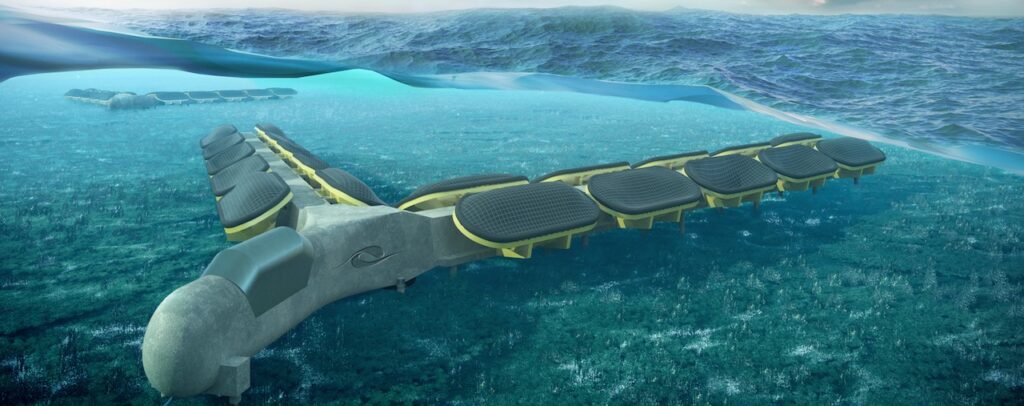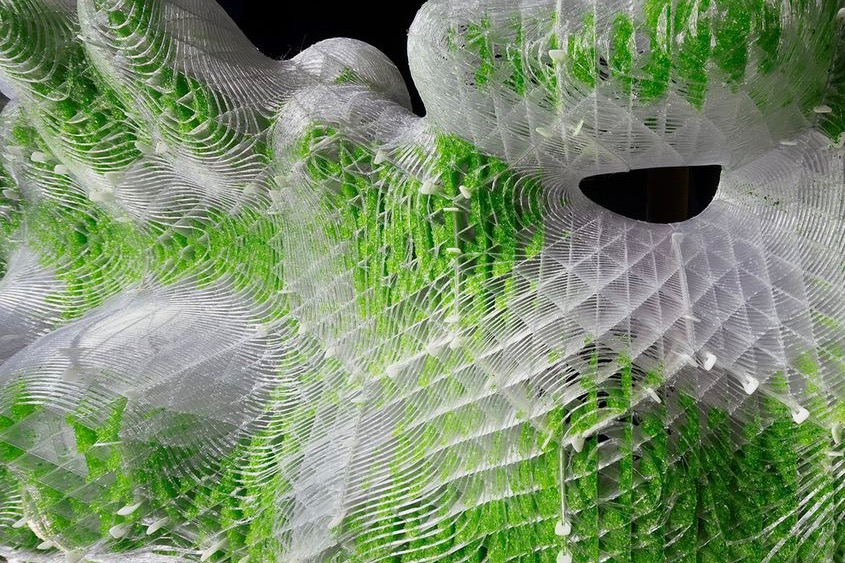Greetings, fellow earthlings. We’ve got a bit of a problem. You might have heard of it already. You know, just the small matter of our planet hurtling towards a fiery, uninhabitable demise. Plus, it seems that the only thing growing faster than the population is our garbage dumps. Oh and there’s also that small detail about people who don’t believe climate change actually exists… Man, you just gotta love humanity, don’t you? It’s time for a reality check guys. We need more than just good intentions to save our planet. We need real action, and that’s where green tech comes in; bringing along the fresh energy innovations and environmental solutions we so desperately needed.
Technology has emerged as a potential ally in the fight against climate change. From renewable energy solutions to advanced data analysis tools, green tech offers a range of opportunities for addressing environmental challenges. It seems that even artificial intelligence (AI) could have a major role to play in this fight! It has the potential to revolutionize the way we approach climate change, offering powerful tools for analyzing data, predicting risks, and developing innovative solutions. Meaning… it might just be the game-changer we needed. Could we possibly turn back the clock on this ticking environmental bomb? Not only that… Can we do it in time?
What is green tech?
Green tech, also known as green technology or clean technology, refers to the development and application of environmentally friendly and sustainable technologies that can help reduce or minimize the negative impact of human activities on the environment. For example, when talking about green tech we would be referring to renewable energy technologies such as solar, wind, and hydropower, energy-efficient buildings and appliances, green transportation such as electric vehicles and public transport, sustainable agriculture and food production practices, and waste management systems that prioritize recycling and reusing materials.
Now that that’s clear, let’s get back to the matter at hand.

Energy innovations are key to environmental solutions
We really aren’t exaggerating when we say that we’re witnessing the catastrophic effects of climate change on our land, ocean ecosystems, and communities displaced by flooding and droughts as a consequence of the constant global energy consumption increase. It’s time for a new approach, and technology, including green tech, is playing an increasingly important role in mitigating the environmental impact of our energy consumption.
Renewable energy is a must. Energy innovations need to happen now.
As of today, if we want to be on the right path to meet the necessary climate goals, we need to reduce our carbon emissions by 70% by 2050. And the truth of the matter is, that it’s not as impossible as it sounds.
It seems like finally, the world is shifting towards taking renewable energy a little more seriously. Could a world run by renewable energy be on the horizon? Is this the end of fossil fuels? It sounds enticing.
Plus let’s not forget that even within renewable energy there’s a lot of energy innovation taking place. There are sources of energy yet to be exploited. For example, waves.
Let’s ride the waves, literally
UK-based company Bombora has created a device known as the mWave. mWave works by capturing the energy from ocean waves using a series of air-inflated membranes that drive a turbine. A single device can produce up to 1.5 MW of electricity, enough to power around 1,500 homes. And by combining several devices in a single installation, the company claims that it can generate up to 14 MW of electricity, which could power around 17,000 homes. The technology is designed to work in all ocean conditions and can be installed offshore, making it ideal for countries with high levels of wave energy, such as the UK, Australia, and Portugal.

Basically, renewable energy and energy efficiency, paired with substantial electrification could result in accomplishing over 90% of the imperative reductions in energy-related carbon emissions.
Because it’s not only a matter of reducing consumption, it’s also a matter of making energy consumption more efficient as a whole. Energy-efficient products and services could make a huge difference.
Energy efficiency is key in addressing sustainability challenges
One of the key players in this regard is the ICT (Information and Communication Technology) industry. The ICT has been increasingly investing in green technology solutions to combat climate change. For instance, Huawei has made a commitment to increase the energy efficiency of its products by at least 270%. Huawei plans to achieve this by implementing various energy-efficient technologies and designs. These include smart power management systems, intelligent temperature control, and high-efficiency power supplies.
On the other hand, companies like Johnson Controls are leading the charge with their innovative building solutions. By integrating IoT technology and smart building systems, Johnson Controls has been able to reduce energy consumption by up to 40%. These systems use sensors and data analytics to monitor and control various building functions, such as lighting, heating, and ventilation. Not only does this benefit environmental protection, but it also saves the owners quite a pretty penny as financial costs are also reduced.
Recently, AI has been making strides across all industries when it comes to the application of green technology.

AI use for environmental solutions
While it is widely recognized that AI can be used to improve energy efficiency and reduce carbon emissions, its potential impact on addressing the root causes of climate change, such as deforestation and the depletion of natural resources, is often overlooked. AI has the potential to revolutionize the way we monitor and manage our planet’s ecosystems. Thus helping us make more informed decisions about how to protect them. We can use green tech to revolutionize nature conservation, from monitoring endangered species to detecting and mitigating natural disasters. Let’s use AI to optimize renewable energy sources and reduce waste in our economy, transitioning to a circular economy. We can even use technology to create new green jobs and boost the economy while reducing our environmental impact. There are simply so many ways in which AI can help with sustainability challenges, it’s surprising that these technologies aren’t being prioritized.
Using AI to mitigate natural disasters caused by climate change
The ability of AI to analyze data and predict environmental risks, such as wildfires and natural disasters is truly amazing. AI can analyze satellite images, weather data, and other environmental factors. It can predict natural disasters like floods, hurricanes, and wildfires, allowing for early warnings and better preparation.
Rhios Lab, a startup based in India, has developed an AI-powered flood prediction system that can help authorities evacuate residents and take other measures to minimize the impact of floods. The system uses data from various sources, such as satellite images and weather data, to predict flood risk in different areas. Thus allowing authorities to prepare and respond to floods more effectively.
The role of AI in environmental monitoring and managing renewable energy sources
AI can be used to optimize renewable energy sources like wind and solar power. It can predict energy output and adjust power generation accordingly.
TrueOcean, a Chinese AI startup, has developed an AI-powered platform that can predict wind speeds and optimize wind turbine performance, resulting in a 15% increase in energy output. Using data from various sources, such as weather data and wind turbine sensors, they can predict wind conditions and adjust the turbines accordingly. This can help maximize energy output and reduce costs. Similarly, ASTERRA, a Dutch startup, uses AI to gather data from the weather and solar panel sensors to optimize solar panel performance and minimize energy waste.

AI and waste tech can help us transition to a circular economy and minimize waste
AI is ushering in a new era of efficiency and resourcefulness. It can analyze vast amounts of data to identify opportunities for reducing waste and improving resource efficiency, leading the charge in transforming our approach to sustainability. Through AI-powered optimization algorithms, companies can take concrete steps towards reducing their energy consumption and carbon footprint in supply chains. The premise is simple, we can monitor waste production and therefore help companies develop more sustainable practices.
The Indian start-up Blue Sky Analytics has developed an AI-powered platform that monitors air quality and identifies sources of pollution. This allows for more targeted and effective policy interventions. Another example is UNEP, the United Nations Environment Programme, which has partnered with AI startup WattTime to develop an AI-powered tool that tracks power plant emissions and helps companies and governments make more informed decisions about their energy use.
It’s not all sunshine and rainbows, we need to put our money where our mouth is
It all sounds fantastic, doesn’t it? However, all this fantastic technology and the good it could do doesn’t strictly mean that we’re on the mend. We know there are options. Now we need to use them. This means investing in the development of green tech and making it accessible to everyone. Sustainability challenges are global, so we need a global response that prioritizes environmental protection and innovation. We need to ensure that green tech isn’t just a luxury for the privileged few, but a solution accessible to all. Additionally, there’s a need for collaboration and coordination among governments, businesses, and individuals to make a significant impact.
Green tech can’t make miracles for sustainable issues
Even if green tech can definitely help mitigate the effects of climate change, that doesn’t mean it’s a solution. It merely helps alleviate the problem, but it doesn’t fix it nor does it stop its evolution. A new study published in the Quarterly Journal of Economics shows that technology can only mitigate around 20% of the potential economic damage from climate change. The research studied agriculture in the US and found that while innovation has reacted strongly to rising temperatures and helped farmers adapt, it cannot fully mitigate the economic consequences of climate change. The damage is accumulating, and even with mitigation, it is expected to increase by 13% by 2100. Developing new technologies is not a substitute for reducing emissions.

Governments must prioritize sustainability and allocate resources to support the transition to a green economy. Companies must also be willing to invest in sustainable practices and products, even if it means sacrificing short-term profits. As a society, we also need to rethink our consumption patterns and make more sustainable choices and integrate them in the long term.
Without these collective efforts, even the most advanced technology will not be enough to combat the urgent environmental challenges we face. It all boils down to the same old thing. The tech is amazing, it provides us with unimaginable potential and opportunities. But it’s all up to how we use it.













